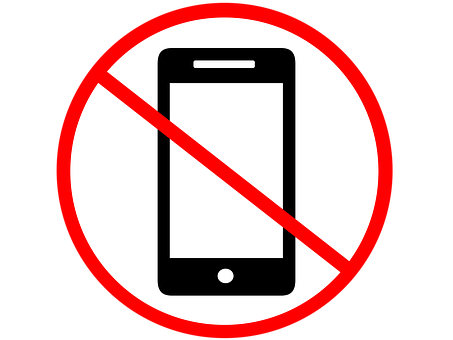“People hang up on me all the time”
“Others don’t answer”
‘It’s a waste of time”
These are but some complaints you’ll hear from sales teams that attempt cold calling or you may have thought them yourself. Undoubtedly cold calling is tough, and you’re most likely going to need extra thick skin to get through it. But this decades-old strategy still works. I will tell you why.
As long as businesses seek new ways to drive stronger revenues or have pain points that need solving, cold calling will always have a place. Cold calling creates opportunities for human interactions, where you can share your value proposition and receive feedback from the listener.
Do you want to improve your game?
Here are some mistakes to avoid when reaching out to cold prospects, along with other notable digital marketing strategies you can implement.
- •Cold Calling Mistakes

Let’s get right into it:
- •Relying on a static calling list. Many businesses purchase cold calling lists, then get their teams to call the businesses on those lists. This is obviously a pathway to rejection, since these businesses don’t know you and may not require your solutions.
- •Not researching your prospects. Tap into social intelligence, sales intelligence, real-time company information, and industry news to know their firmographic data, contact person, industry challenges, and your ability to provide value.
- •Get rid of the generic sales script. Now that you’ve researched your prospect, it’s time to reconstruct that script in line with your findings. They may be dealing with geographical expansion, an acquisition, or perhaps won a huge tender, etc.
- •Being overly familiar. Being enthusiastic and conversational is one thing, and being overly familiar with a prospect is another. Be respectful, use formal language, build rapport professionally, and let your prospect set the boundary for familiarity..
- •Failing to provide specifics. Rather than brag about your solutions, share concrete numbers and the benefits your offerings can bring into the prospect’s business. It will give them something to chew on and encourage engagement.
- •Content Marketing

Content marketing is an excellent option for businesses that want to generate more leads, build trust leading to more conversions, and stamp industry authority.
Here, you publish content such as sales memes, gifs, blogs and white papers that educates audiences, helps solve their problems, and compels them to want to know more about your company.
But B2B content can be notoriously boring so here are tips to help add some zest to yours:
- •Mix up formats. If you aren’t receiving results from the content you’re sharing, try sprucing up the presentation. Convert lengthy blogs into ebooks, videos, or SlideShare presentations. Include a webinar or two and create 1-2 minute long video snippets to grab attention.
- •Infographics work. These eye-catching content formats are fantastic for raising awareness and increasing exposure. You can even break them down to Twitter images and LinkedIn posts.
- •Go for quality. Convince audiences you’re the best at what you do, by creating high-quality, well-researched pieces. Build credibility by conducting surveys, studies, and polls then presenting your findings in a palatable format. You may earn inbound links from other sources quoting your findings.
- •Monitoring Online Reputation Management

How do your clients perceive you?
What do they think of your business or solutions?
Understanding customer experiences and managing your reputation is crucial for your business.
This is particularly important since many B2B sales transactions take an awfully long time to complete and retaining existing customers is precious.
If you want to keep your reputation stellar in the public eye, here are some considerations:
- •Monitor online sites. It’s important for your business to be where your customers are and to monitor what they say about you. But since monitoring all mentions on all channels can be impractical, you can invest in a social listening tool to do the job.
- •Develop a response plan. Define comments that need responses and how to deal with negative comments or reviews. While we’re on the subject, learn to own your mistakes and work toward fixing the issue. Apologize officially and publicly to show people you genuinely care.
- •Build on the positive. Research revealed that up to 94 percent of consumers are influenced by an organization’s positive reviews to do with it. If people are saying positive things about you, your credibility goes up. So encourage happy customers to drop online reviews then share these reviews on your website and on social channels.
- •Running Sales Promotions

For decades now businesses have successfully run sales promotions to heighten awareness, increase revenue, and boost customer satisfaction.
The goal behind the discounts, or free trials/samples, is to encourage the target audience to become paying customers.
Here are some effective promotional ideas
- •Offer flash sales. ear of missing out is real and flash sales capitalize on this since you’re offering limited-time discounts. Create fun branded hashtags to create awareness about an upcoming sale.
- •Focus on sales promos that encourage repeat business. It’s much easier to retain a customer than it is to obtain a new one. Come up with incentives for those who come back. Here, you can even offer discounts for upsells or cross-sells.
- •Offer free trials or samples. Introducing consumers to products/services they hadn’t considered before cordially encourages them to buy. Naturally, you’ll need to first ensure that your offers match their needs.
- •Video Marketing

According to research, up to 78 percent of video marketers stated that video directly helped increase sales for their organizations.
A highly likely statistic since this visually appealing strategy helps users understand the different aspects of a product/service, including how it works.
From explainer videos to expert interviews, tutorials, product demos, and video presentations you have different formats with which to appeal to your audiences.
Think about the following:
- •Keep videos concise. B2B challenges are oftentimes complicated and require complex solutions. If you want to reach and influence decision-makers, try articulating your solutions and benefits without getting overly technical. Keep the videos short (to retain audience attention) and laser-focused on the benefits.
- •Create case studies. Showing how your solutions benefit real-life users allows viewers to see their power firsthand. It’s a powerful tool for convincing prospective customers to buy from you.
- •Address buy-in concerns using video. B2B decision-makers have plenty to consider before choosing a solution which means you may need to make extra effort to encourage them to buy. Creating an engaging video that shows how your solutions can benefit their organization may help address buy-in concerns.




